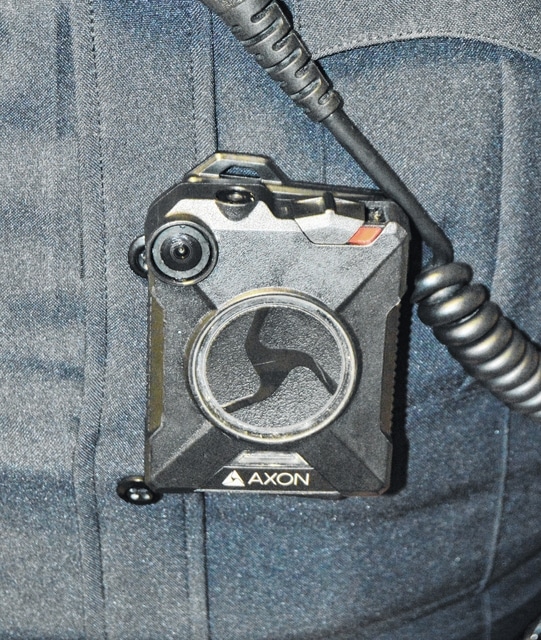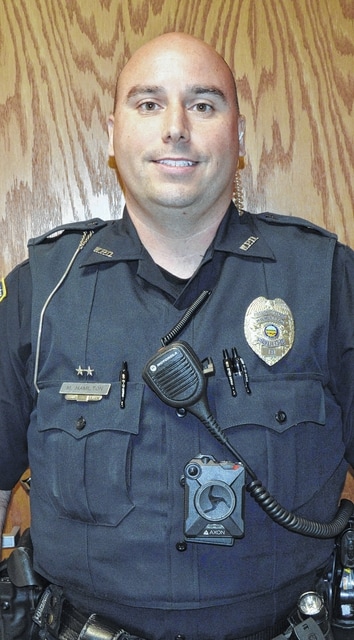

WILMINGTON — If you meet a Wilmington police officer, you might want to smile. Odds are, you’re on camera.
Earlier this year, the Wilmington Police Department acquired four Axon Body 2 body cameras – two through its budget and two from the Wilmington Lions Club. Since the department purchased them, “We have captured video from felony OVIs to resisting arrest,” wrote Wilmington Police Chief Duane Weyand. “The evidence we have captured has been a great tool for us, and we have used them to interview witnesses on scene.”
After turning the camera on, officers record video by tapping on the camera twice. When it starts recording, the camera also stores the previous 30 seconds.
When the officer finishes recording, he taps and holds onto the camera to stop recording. When the officer finishes his shift, he returns the camera to its dock so the camera can charge and upload footage to the manufacturer, TASER, which provides data hosting.
Weyand wrote that the cameras’ software has the ability to edit out moments that might create a privacy issue, such as nudity or Social Security number-related comments.
In additional to evidence collection, Weyand also said he hopes to use the video retained by the cameras as a training tool.
“The biggest training tool these provide is reviewing them for tactics,” Weyand wrote. “Did the officer position themselves somewhere safe or was their weapon hand free (i.e. keeping the flashlight or ticket book out of it)?”
WPD Officer Matt Hamilton said the cameras are good technology that will help supplement traditional evidence in many ways and helps protect officers, but they still have their limitations.
“It would give a better perspective of an incident that way it’s better for court,” said Hamilton. “It helps to aid a clear and accurate description of what occurred at the incident.
“But, it all depends on the angle,” Hamilton continued. “The angle that some incidents are occurring could have a big effect.”
Previously, Weyand had said the cameras, which sit on officers’ torsos, may be blocked or knocked off. Officers might also see something the camera wouldn’t through peripheral vision or by turning their heads.
Hamilton said the cameras also add an extra eye to crime scenes. If for instance, an officer’s vision is directed away from a suspect but the camera isn’t, the camera may catch the suspect throwing something away. “We might catch something that we wouldn’t,” otherwise have caught, Hamilton said.
Hamilton also speculated that the videos might give officers more leverage when a victim becomes unwilling to continue pressing charges.
“We encounter a lot of incidents, even domestic situations, where at that moment, they want the person arrested,” Hamilton said. “A lot of times we go to court and they want to change their story. … The case usually gets dismissed.”
The camera, Hamilton said, “paints a picture of what was going on, the chaos at that moment” and might be usable in pressing charges.
Reach Nathan Kraatz at 937-382-2574, ext. 2510 or on Twitter @NathanKraatz.



